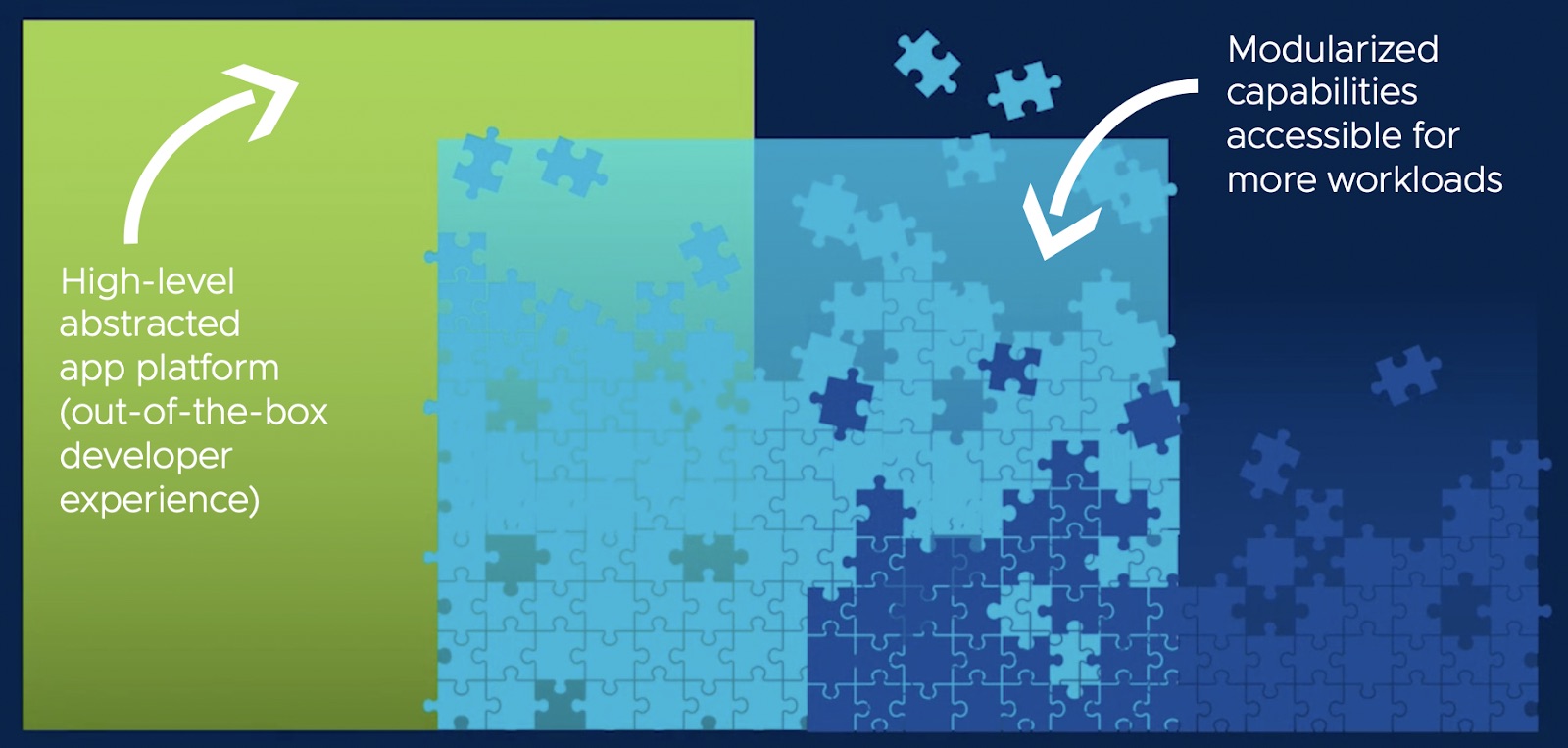Day 2 at SpringOne 2020 will flash into the future of cloud native computing while grounding us in the innovations that are paving the way. We will start the day with a keynote focused on building and scaling developer-centric platforms. After all, teams that engage an automated app development and delivery model win. They are more innovative, agile, and efficient, according to a recent VMware survey of 5,000 developers and IT decision-makers.

Craig McLuckie, VP of R&D at VMware, will kick off Day 2 by speaking about the evolution of operations and growing focus on the developer experience. The goal: Help developers spend more time capturing business logic in code instead of coding infrastructure to run their apps. He’ll highlight how a dev-centric platform empowers developers with familiar tools while supporting them with technologies that enable safety and security as they build and deploy apps.
Read on for a summary of the news and sessions coming your way on Day 2.
Tanzu Application Service: The evolving app platform
With autonomous, self-service platforms, developers bypass help desk tickets and change control systems. Instead, the platform does the work. It discovers, assembles, curates, applies, deploys, and connects all components together for a running production environment—the entire build value chain. That’s where VMware Tanzu Application Service (TAS) excels. And you’ll see TAS showcased in myriad customer stories and tech sessions here at SpringOne.
This application platform sets a high bar for developer abstraction by delivering a consistent developer experience across clouds. The latest 2.10 release simplifies even the most complex tasks with the new Cloud Foundry CLI v7. And developers can easily extend their apps using innovative public cloud services with the new Cloud Service Broker. With it, they can use familiar service broker commands to bring in the most popular services from hyperscale providers—the ultimate combination of developer self-service and operational efficiency!
Get ready to take this tried-and-true developer experience to Kubernetes. TAS, which currently runs on VMs, is being thoughtfully enhanced to run on Kubernetes as well. It will make use of some of the best parts of the Cloud Native Computing Foundation ecosystem, like Istio, Envoy, Harbor, and Fluentd. Don’t miss this session on the making of TAS for Kubernetes, which will include a product overview and demonstration, and be sure to try out the public beta.
Improving release velocity for “the rest of us” workloads
To get the most out-of-the-box experience for developers, you should aspire to use the highest level of abstraction for a given workload. Sometimes that’s through an app platform like TAS. For other workloads, Kubernetes and container-centric systems are a better answer. (Check out Derrick Harris’ post on the 1-Factor App to learn more about the minimum modernization effort needed for heritage apps.)
During his SpringOne keynote, McLuckie will share how the VMware Tanzu portfolio simplifies the building of developer-centric platforms and makes Kubernetes accessible to all the applications in your portfolio. VMware offers modularized capabilities so you can deliver business outcomes for any given workload that you deal with on a day-to-day basis.

The most recent example of this modularity is VMware Tanzu Build Service, now generally available. With Build Service, you can automatically build, maintain, and update portable OCI images in a Kubernetes-native, declarative way. It eliminates the rigor of constant container maintenance and speeds the remediation of security vulnerabilities. Check out the DevSecOps with Confidence session to learn how Build Service fits into a DevSecOps workflow to deliver CVE container fixes at scale.
Other capabilities in the Tanzu portfolio that you can integrate to improve developer productivity and operational efficiency include:
-
Breaking down data monoliths with on-demand caching, messaging, and database software for modern apps.
-
Centrally managing and securing Kubernetes clusters and modern apps across teams and clouds. Learn how at this session.
-
Observing and managing application health at massive scale—now available to Spring Boot developers for free (including metrics, distributed traces, histograms, and span logs).
-
Connecting, protecting, and monitoring your microservices across any runtime and any cloud. Learn more at this session.
Dev-centric platform teams complete the puzzle
A platform is only as good as the team that runs it, and a successful team treats its platform as a product. It’s a living, breathing entity that’s continually improved in response to the needs of the core users—developers. A platform becomes the best path to production for developers across an organization (not just an isolated segment). And it enables the critical collaboration among Dev, Ops, and other stakeholders needed to deliver great outcomes.
At SpringOne, we are fortunate to hear from a number of teams that recognize the speed, stability, savings, and scale that are achievable with an application platform. Learn how:
-
AirFrance-KLM migrated a critical but complex payment app in only six weeks using TAS and VMware Pivotal Labs.
-
Albertsons, one of the largest food and drug retailers in the U.S., has been ensuring essentials are reaching its customers during COVID-19 by using TAS to manage unprecedented traffic.
-
Daimler freed hundreds of dev teams from operations scaffolding and allowed them to focus on delivering software using its platform-as-a-product strategy in combination with KPIs.
-
Fiserv built a critical loan application once the pandemic hit and drove developer efficiency and operational scale with the use of a platform.
-
Ontario Teachers’ Pension Plan adopted a DevOps model underpinned by TAS platform capabilities that resulted in significant savings and happier developers.
-
TD Ameritrade measures return on investment and furthers adoption of TAS in the enterprise.
-
T-Mobile manages large distributed systems at scale, using service-level objectives and service-level agreements to build customer trust and continuously improve.
The promising outlook for dev-centric platforms and the teams that run them has got me singing (thanks to Timbuk3) “The future’s so bright, I gotta wear shades.” Enjoy Day 2 of SpringOne!







